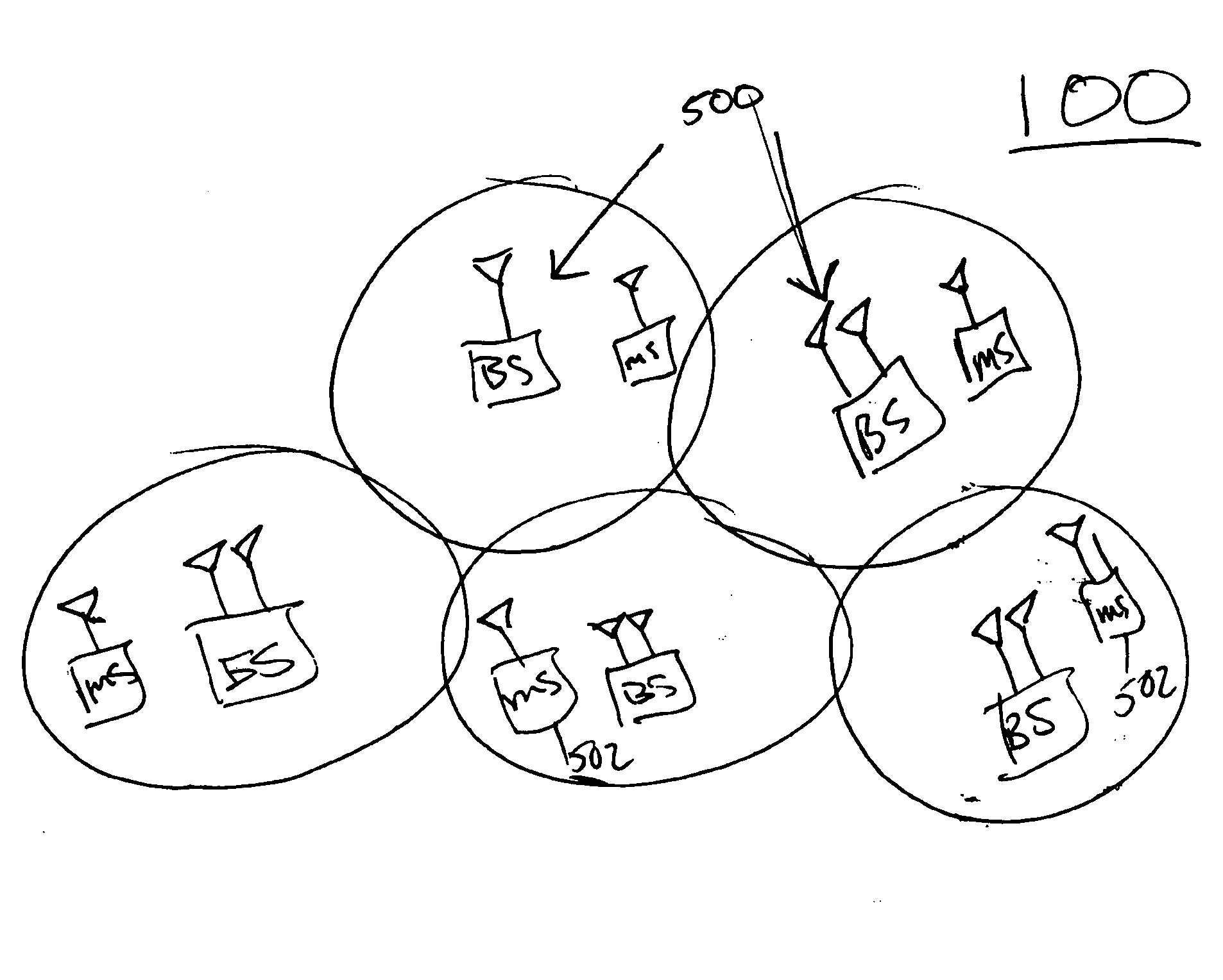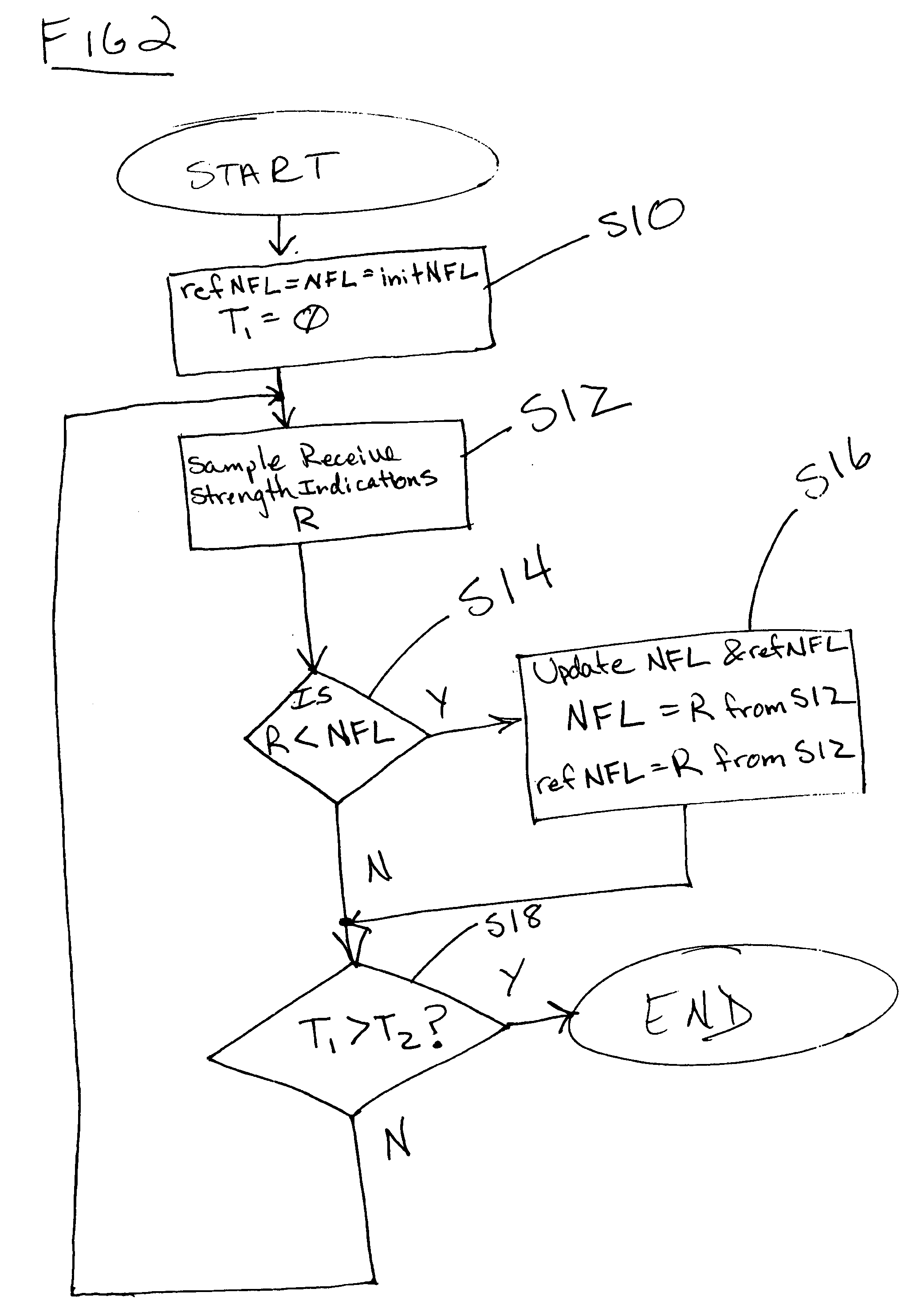Method for dynamically estimating noise floor and rise over thermal (ROT)
a dynamic estimation and noise floor technology, applied in the direction of transmission monitoring, electrical equipment, assess restriction, etc., can solve the problems of low voice quality or high frame error rate, wireless system reduces reverse link coverage and/or reliability, and may generate interference for mobile stations on the reverse link or the base station on the forward link. to achieve the effect of facilitating the maintenance of a performance targ
- Summary
- Abstract
- Description
- Claims
- Application Information
AI Technical Summary
Benefits of technology
Problems solved by technology
Method used
Image
Examples
Embodiment Construction
[0010] In accordance with the invention, FIG. 1 shows a block diagram of an access control system 13 for controlling access of a subscriber station 24 to a wireless communications system 11 to maintain reliability of the communications services provided to other subscriber stations (not shown) already using the wireless communications system 11. The wireless communications system 11 includes a base station 10 coupled to a base station controller 26. In turn, the base station controller 26 is coupled to a telecommunications switch 30, which may provide access between the wireless communications system 11 and a public switched telephone network 28.
[0011] In the embodiment shown in FIG. 1, the access-control system includes a first measurer 16 for measuring a first performance indicator (e.g., interference rise on a reverse link of the base station 10) and a second measurer 18 for measuring a second performance indicator (e.g., loading on the base station 10). For example, the first m...
PUM
 Login to View More
Login to View More Abstract
Description
Claims
Application Information
 Login to View More
Login to View More - R&D
- Intellectual Property
- Life Sciences
- Materials
- Tech Scout
- Unparalleled Data Quality
- Higher Quality Content
- 60% Fewer Hallucinations
Browse by: Latest US Patents, China's latest patents, Technical Efficacy Thesaurus, Application Domain, Technology Topic, Popular Technical Reports.
© 2025 PatSnap. All rights reserved.Legal|Privacy policy|Modern Slavery Act Transparency Statement|Sitemap|About US| Contact US: help@patsnap.com



